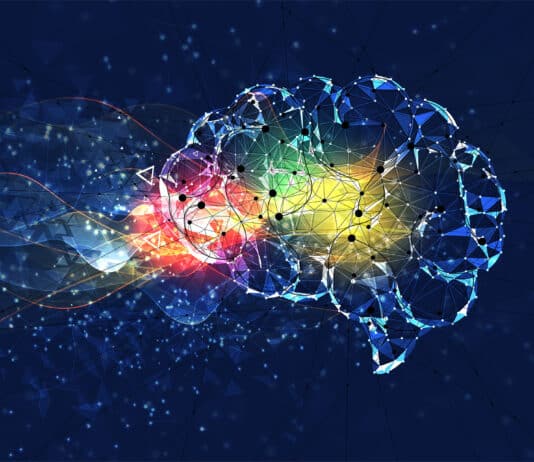Data spoofing is the intentional manipulation, fabrication, or misrepresentation of data with the aim of deceiving systems into making incorrect decisions or assessments. While it is often associated with IP address spoofing in network security, the concept extends into various domains and types of data, including, but not limited to, geolocation data, sensor readings, and even labels in machine learning datasets. In the realm of cybersecurity, the most commonly spoofed types of data include network packets, file hashes, digital signatures, and user credentials. The techniques used for data spoofing are varied and often sophisticated,
Targeted disinformation poses a significant threat to societal trust, democratic processes, and individual well-being. The use of AI in these disinformation campaigns enhances their precision, persuasiveness, and impact, making them more dangerous than ever before. By understanding the mechanisms of targeted disinformation and implementing comprehensive strategies to combat it, society can better protect itself against these sophisticated threats.
GAN Poisoning is a unique form of adversarial attack aimed at manipulating Generative Adversarial Networks (GANs) during their training phase; unlike traditional cybersecurity threats like data poisoning or adversarial input attacks, which either corrupt training data or trick already-trained models, GAN Poisoning focuses on altering the GAN's generative capability to produce deceptive or harmful outputs. The objective is not merely unauthorized access but the generation of misleading or damaging information.
Adversarial attacks specifically target the vulnerabilities in AI and ML systems. At a high level, these attacks involve inputting carefully crafted data into an AI system to trick it into making an incorrect decision or classification. For instance, an adversarial attack could manipulate the pixels in a digital image so subtly that a human eye wouldn't notice the change, but a machine learning model would classify it incorrectly, say, identifying a stop sign as a 45-mph speed limit sign, with potentially disastrous consequences in an autonomous driving context.
Growing reliance on AI will not likely result in any of the three most common views of how AI will affect our future. Each...
As early as the mid-19th century, Charles Babbage and Ada Lovelace created the Analytical Engine, a mechanical general-purpose computer. Lovelace is often credited with the idea of a machine that could manipulate symbols in accordance with rules and that it might act upon other than just numbers, touching upon concepts central to AI.
IntroductionTrustworthy vs Responsible AITrustworthy AIAttributes of trustworthy AI1. Transparent, interpretable and explainable2. Accountable3. Reliable, resilient, safe and secure4. Fair and non-discriminatory5. Committed to privacy...
Data masking, also known as data obfuscation or data anonymization, serves as a crucial technique for ensuring data confidentiality and integrity, particularly in non-production environments like development, testing, and analytics. It operates by replacing actual sensitive data with a sanitized version, rendering the data ineffective for malicious exploitation while retaining its functional utility for testing or analysis.
Because it demands so much manpower, cybersecurity has already benefited from AI and automation to improve threat prevention, detection and response. Preventing spam and identifying malware are already common examples. However, AI is also being used – and will be used more and more – by cybercriminals to circumvent cyberdefenses and bypass security algorithms. AI-driven cyberattacks have the potential to be faster, wider spread and less costly to implement. They can be scaled up in ways that have not been possible in even the most well-coordinated hacking campaigns. These attacks evolve in real time, achieving high impact rates.
In 2013, George F. Young and colleagues completed a fascinating study into the science behind starling murmurations. These breathtaking displays of thousands – sometimes...
If you’ve read the many predictions about the future of AI, you’ve likely found them to be wildly different. They range from AI spelling...
Backdoor attacks in the context of Machine Learning (ML) refer to the deliberate manipulation of a model's training data or its algorithmic logic to implant a hidden vulnerability, often referred to as a "trigger." Unlike typical vulnerabilities that are discovered post-deployment, backdoor attacks are often premeditated and planted during the model's development phase. Once deployed, the compromised ML model appears to function normally for standard inputs. However, when the model encounters a specific input pattern corresponding to the embedded trigger, it produces an output that is intentionally skewed or altered, thereby fulfilling the attacker's agenda.
Meta-attacks represent a sophisticated form of cybersecurity threat, utilizing machine learning algorithms to target and compromise other machine learning systems. Unlike traditional cyberattacks, which may employ brute-force methods or exploit software vulnerabilities, meta-attacks are more nuanced, leveraging the intrinsic weaknesses in machine learning architectures for a more potent impact. For instance, a meta-attack might use its own machine-learning model to generate exceptionally effective adversarial examples designed to mislead the target system into making errors. By applying machine learning against itself, meta-attacks raise the stakes in the cybersecurity landscape, demanding more advanced defensive strategies to counter these highly adaptive threats.
Label-flipping attacks refer to a class of adversarial attacks that specifically target the labeled data used to train supervised machine learning models. In a typical label-flipping attack, the attacker changes the labels associated with the training data points, essentially turning "cats" into "dogs" or benign network packets into malicious ones, thereby aiming to train the model on incorrect or misleading associations. Unlike traditional adversarial attacks that often focus on manipulating the input features or creating adversarial samples to deceive an already trained model, label-flipping attacks strike at the root of the learning process itself, compromising the integrity of the training data.
Neural networks learn from data. They are trained on large datasets to recognize patterns or make decisions. A Trojan attack in a neural network typically involves injecting malicious data into this training dataset. This 'poisoned' data is crafted in such a way that the neural network begins to associate it with a certain output, creating a hidden vulnerability. When activated, this vulnerability can cause the neural network to behave unpredictably or make incorrect decisions, often without any noticeable signs of tampering.




















